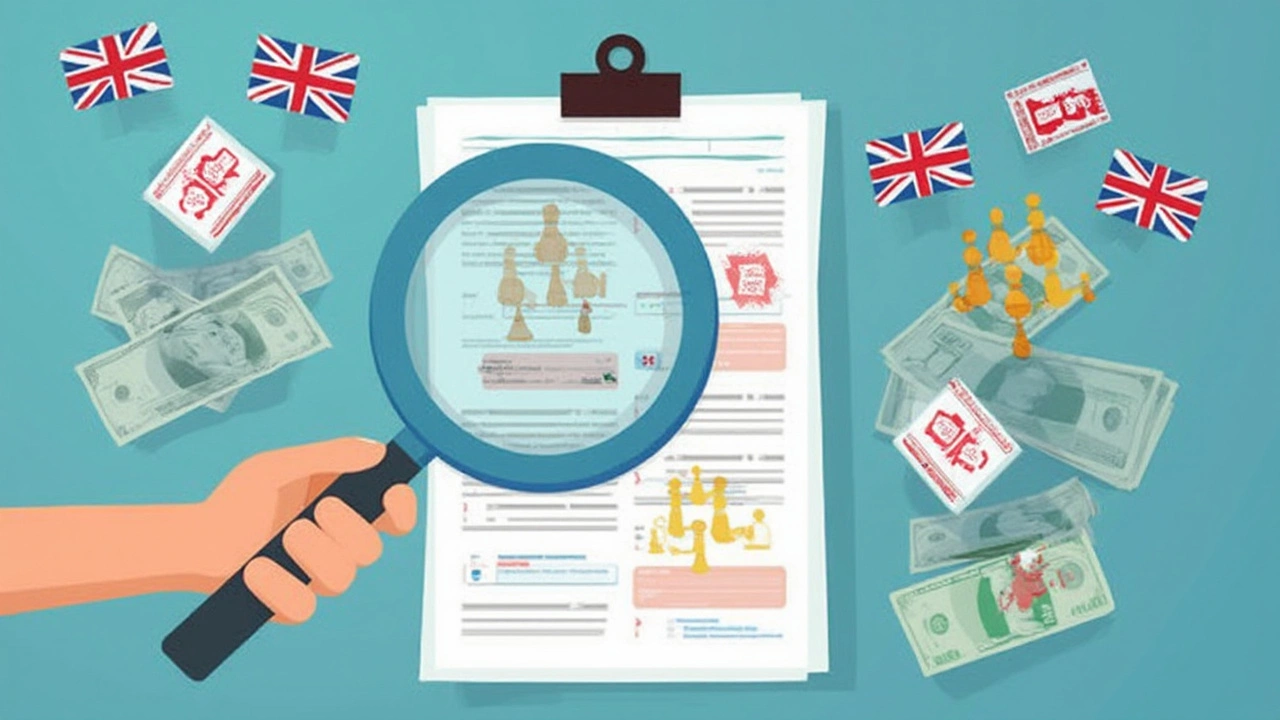Safest Places to Get a Personal Loan: Secure Options for 2025
 Jul, 2 2025
Jul, 2 2025
You probably already know borrowing money can feel like a leap into the unknown—like tossing your info into a black hole and hoping nothing weird bounces back. Personal loans are popular right now because, more than ever, people want fast cash for everything from consolidating debt to covering emergencies. But here’s the kicker: not every place that offers you a loan is playing fair. In fact, the wrong choice could leave you tangled in hidden fees, spammy calls, or even flat-out identity theft. So, where can you borrow safely in 2025?
Banks, Credit Unions, and Online Lenders: Who Can You Trust?
When you’re hunting for the safest personal loan, it’s pretty tempting to just search “best loan near me” and click the first shiny “Apply Now” button. But let’s get real—where you borrow from makes a huge difference in how protected your details and money will be. Traditional banks are still a top pick for people with good credit. The big names—Chase, Bank of America, Wells Fargo—have built-in protections and time-tested security systems. They run background checks, follow federal lending rules, and don’t mess around with weird fine print. But the application process can be slow, and their rates are rarely the lowest unless your credit is spotless.
Credit unions deserve a shoutout here. They’re nonprofit, which means their main mission is helping members (not raking in sky-high profits). If you’re a member (or can join), the rates are almost always better than big banks. Credit unions also win at customer service—someone’s actually going to remember your name and help you figure out if that loan is a good move for your situation. The National Credit Union Administration found in 2024 that average personal loan rates at credit unions were nearly 2% lower than big national banks. The process is a bit slower, but the risk of reading horror stories on Reddit about “wild fees I never agreed to” is a lot smaller.
Online lenders like SoFi, LightStream, and Marcus by Goldman Sachs have changed the whole game. These guys use slick apps, soft credit checks, and approvals in hours (sometimes minutes). The upside? Their tech is solid, encrypted, and they move fast—great if you need cash yesterday. But there’s a catch: online-only lenders aren’t as tightly regulated as banks or credit unions. That means you have to check ratings on Trustpilot, read customer reviews, and dig through the FAQ for any “gotcha” fees. Stick with the well-known names, and look for lenders that have clear licensing info and don’t hide their fees in 10-page agreements. If you’re being asked for a bunch of upfront fees, back out—legit online lenders will never charge for "application processing" before they’ve even approved your credit.
Here’s a breakdown of loan averages to give you the lay of the land:
| Lender Type | Average APR (2024-2025) | Typical Loan Amount | Approval Time |
|---|---|---|---|
| Banks | 8%-13% | $5,000-$50,000 | 2-7 days |
| Credit Unions | 6%-11% | $500-$40,000 | 3-7 days |
| Online Lenders | 7%-25% | $2,000-$100,000 | 1 day-1 week |
See where your needs (and credit score) fit in, and never let the promise of instant approval be a substitute for real safety checks.
What Makes a Loan Place “Safe” Anyway?
Safe doesn’t just mean “not a scam.” A safe place to get a personal loan keeps your identity locked down, sets you up with honest terms, and doesn’t leave you dodging surprise bills or calls from collections. The first sign of safety? The lender is licensed to operate where you live. Each state has a list of legit loan providers—just search your state's banking department website if you want to be sure. If the lender’s missing from that list, or they don’t have clear U.S. contact info, it’s a red flag.
Another big deal is transparency. Reputable lenders put their rates, fees, and policies front and center. If you have to dig to find out how much the loan will cost, move on. Read the full disclosure before signing anything, including the total payment after interest, prepayment penalties, and late payment fees. If they use phrases like “guaranteed approval” no matter your credit, run—they’re either not honest, or they’ll hit you with a massive interest bill later.
Protection of your personal info is also non-negotiable. Look for websites that show SSL security (https:// and a padlock next to the site name in the browser). Top lenders also have clear privacy policies detailing if, when, and why they share your data with third parties. If you get a whiff that your info will be sold or you start getting “pre-approved offer” spam within minutes of your inquiry, bounce out of there fast.
What about those calls and texts after you fill out an application? Safe lenders either stick to secure portals or make just one or two follow-up calls—not an endless barrage trying to force you into a loan. The Consumer Financial Protection Bureau (CFPB) actually reported a 40% increase in loan scam complaints between 2023 and 2024, many coming from people who got dozens of robocalls after sharing their info at sketchy "instant loan match" sites.
Here are a few telltale signs you’re in safe territory:
- They check your credit and verify income (“No credit check” usually = high risk).
- They clearly outline the full cost of the loan—with APR, not just flat monthly payments.
- You can talk to a real human if you have questions.
- They don’t push you to borrow more than you need.
- No payment or personal info is collected before approval.
- They report payments to credit bureaus (good for building credit, and another legitimacy sign).

Watch Out for Loan Scams: Tactics and Red Flags People Miss
Loan scammers get trickier every year. Some now have legit-looking websites, fake business addresses, and recent “customer” reviews that are totally fabricated. The Federal Trade Commission estimates Americans lost more than $370 million to loan scams in 2024—up almost 50% from three years earlier. Here’s what catches most folks: the scammer reaches out first, promises easy approval, or asks for something like a “processing” or “insurance” fee upfront. Or maybe the fake lender’s website made it look like you’ve already locked in a low rate before they have any of your info. Both scenarios? Massive red flags.
If a lender ever asks you to wire money, buy gift cards, or Venmo a “deposit,” stop right there. Legitimate lenders will never ask you to pay anything before finalizing your loan. And if you’re rushed to make a decision (“This offer expires in two hours!”), take a step back. The only thing expiring is your financial safety if you move too fast.
Another big tip-off: inconsistent contact details. If the phone number leads to a voicemail that doesn’t match the company’s name, or emails look like they were made last week, it’s probably a scam. Test their customer support! A trustworthy operation won’t pressure you, and they’ll have a real customer service line—not just a web chat or a mysterious contact form.
Social media ads and sponsored content can look totally legit, too. In 2024, over 30% of loan-related scam complaints to the Better Business Bureau came from online and social media ads. Don’t click through and enter details until you’ve double-checked the lender’s real website (just Google their name plus “complaints” or “scam” to see what comes up). Remember that the fastest-growing scams right now target people with poor credit, since they’re more desperate and might overlook red flags.
Here’s a rapid-fire safety checklist to dodge scams:
- Avoid any lender asking for upfront fees.
- Reject offers from “lenders” you never contacted first.
- Don’t trust promises of “guaranteed approval.”
- Check reviews on multiple platforms (Google, BBB, Trustpilot).
- Look up the lender on your state’s official licensing portal.
- Never share your Social Security number until you’re 100% certain of the lender’s identity.
How to Make Sure You Get the Safest Personal Loan
You’ve got options, but getting the safest personal loan comes down to method, not just luck. Start with your own bank or credit union—especially if you’ve been with them for a while. They already know you, so verification will be easier, and you might even snag a lower interest rate or loan-discount offer.
If you’re shopping online, check top comparison sites like NerdWallet, Bankrate, or LendingTree. These sites vet their listings, show you side-by-side offers, and sometimes even soft-check your credit for pre-qualification. Just watch out for the ones that sell your data; always check if the site will pass your info around before filling out a giant form.
Always read every document before signing—yes, all the mini-font stuff. Look out for prepayment penalties, ongoing monthly “maintenance fees,” or short-term deferred interest. Never sign anything if you don’t 100% understand the total loan cost or what happens if you miss a payment.
Online reviews can be your best friend or your worst enemy. Stick to sources like the Better Business Bureau (BBB), Trustpilot, or Consumer Affairs. If you see a company has the same cut-and-paste review over and over, or tons of reviews in a single day or week, it’s probably too good to be true. Look for details: reviews that mention specific loan types, actual staff names, or how long the approval process took sound more legit.
Don’t be afraid to ask questions—even if you feel like you’re being annoying. Safe lenders welcome questions and will take the time to talk through terms. If you get pushback or vague answers, consider it a red flag. With interest rates moving up and down over the last year, some lenders may also quote very different rates from what’s advertised—always double-check in writing what your rate will be before you sign.
Set alerts for your credit report during the application process. Use free tools (like Credit Karma or your bank’s credit monitoring) to watch for unexpected inquiries. Almost no legit lender will do a “hard” check without your OK, and if you see odd activity, contact the credit bureaus right away. This step alone can save you if your identity slips into the wrong hands.
Bottom line? The safest place for a personal loan is somewhere that’s tightly regulated, has a long track record of real customer support, and treats your personal info with care. For most people, that means starting with your own bank or credit union, then branching out to the biggest names in online lending if you want faster approval. And remember: no “deal of a lifetime” is worth the nightmare of a bad lender or a scam. Be picky, ask questions, and keep your info close to your chest until you’re 110% confident. Your future self will thank you.
